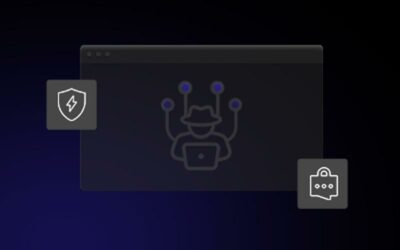Millions of people use the internet every day to stay connected and help make the world smaller. Networks help to create commerce, entertainment, and art.
As technology grows, online capabilities continue to expand as well. While much of this connected world offers a positive experience, there is also a dark side that needs to be considered.
HACKERS
One concern that can create a tremendous amount of stress is the threat of hackers. Hackers are widely synonymous with deliberately using their computer skills to illegally access important information. Businesses as well as innocent individuals have the potential to be victimized by these anonymous scammers. These fraudulent activities are often centered around finances, politics, and manipulation.
Cyber terrorism is another threat that can cause fear and major disruptions. This faction is more interested in directing political discourse and pushing a specific agenda rather than scamming people out of their money. They are particularly dangerous since they can incite aggression which can lead to violence. Social media platforms are the preferred playground for this dangerous group.
DARK WEB
The average person usually spends their time browsing the internet, paying bills, reading articles, or watching videos. These activities are quite benign and can be enjoyable.
Unfortunately, there is another side to the internet that is not as innocent and can be used for malicious intent. The dark web is a place that can only be accessed using a specific browser. This space offers a variety of legitimate and corrupt content. It is not uncommon for hackers to share and sell social security numbers, medical records, passwords, or other personal information.
This information can be purchased and used to rack up thousands of dollars of credit card debt. Often, the victim is unaware that their information is being used. It is not until a collections agency comes calling that they realize someone has stolen their identity or personal information.
SCAMS & CYBERCRIME
Reading an e-mail from a friend or getting vital information from a colleague is part of most people’s everyday routine. Phishing is a common cybercrime that cyberattack prevention managed detection and response (MDR) can help avoid.
In this online scam, hackers most often send a fraudulent e-mail from a banking institution, a social network, or a supposed friend that gets the victim’s attention. When this message is opened, the individual unknowingly shares information or installs software that allows the hacker to take control of their computer. Once this happens, credit card and personal banking information are at risk.
While many scams are designed to attack individuals on a personal level, businesses are also at risk. Payment redirection scams are another example of cybercrime. The difference with this deceptive scheme is that it is focused on businesses and not on individuals. In this example, the business is fooled into creating a new bank account so that the hacker receives all future payments. Dealing with scams and hackers can be challenging and frustrating but MDR can help protect your assets.
PROTECTION
With all these potential scams and online threats, it is easy to be overwhelmed. People do need to pay close attention to their online activities but must also realize that there is protection available.
Following some basic safety protocols can be a good way to protect personal information. One of the easiest ways to keep computer systems safe is to install antivirus software. This keeps hackers from being able to access vital information easily. Also, changing passwords frequently is an effective way to make it very challenging to gain access to banking accounts or social media platforms.
The internet is a vital part of modern life. People depend on this medium for social interaction, business, and work. With all these avenues of activity available, it is not a surprise that some may have nefarious intentions. While not everyone is well versed in maintaining cybersecurity, there is no need to stress or worry. There are steps available to help keep any computer safe.



